Remains Of Ancient Roman Military Camp Discovered In Brno, Czech Republic
AncientPages.com - During their expeditions against the various barbarian tribes, the Roman armies reached the territory of the present city of Brno, located in South Moravian, the Czech Republic.
Recent archaeological excavations in Brno revealed the remains of a Roman military camp, which archaeologists date back to the second century AD.
While on their way of pursuing the European barbarian tribes, the Romans
According to an archaeologist, Václav Kolarík of the company Archaia, who is in charge of these excavations the camp dates from the time of the Marcomannic Wars, a series of wars that lasted from c. 166 AD to 180 AD. During this time, the Romans were at war with Germanic tribes of the Middle Danube.
See also:
Antonine Wall: Impressive Roman Frontier Built By Empire’s Three Legions In Scotland
Unique More Than 1,600-Year-Old Board Game With Pieces Recovered From Roman Soldier’s Tomb
The camp, of which remains have been discovered in the center of the city of Brno, was built during the Roman offensive, between 172 AD and 180 AD. "
The Romans built also other military camps on the territory of what is now Moravia, the eastern part of the Czech Republic, at the time, these regions were inhabited by inhabited at the time by the Marcomanni who entered into a confederation with other peoples including the Quadi, Vandals, and Sarmatians, against the Roman Empire.
Earlier, another Roman camp was also discovered in the town of Modrice, also in the vicinity of Brno.
Kolarík said that on their way north of Danube, Europe's second longest river, located in Central and Eastern Europe, the Romans built camps that ensured their progress on the territory of the barbarians. The largest concentration of these camps in the Czech Republic, is near the lakes of Nové Mlýny, in Mušov, and then in Pribice and Ivan. Other camps were also found in Central Moravia.
The Brno camp served only as a temporary, small-capacity camp that could not accommodate more than one unit of Roman soldiers.
The tents, erected on an area of several hundred square meters, were protected by a rampart.
"It was one of the points of support of the Romans on their way to Barbaricum. It is located on the Svratka River, near a major fording. The aim of the camp was to keep watch over this ford and thus ensure that the Roman soldiers made a quiet advance into the interior of the country. It also functioned as a supply station for units that had already crossed the river," Kolarík explained.
Usually, the Romans did not leave artifacts, private objects and other remains used by their soldiers, but buried them.
However, it is sometimes possible to discover something left by the Roman soldiers.
In Brno, archaeologists discovered a ceramic pot, almost completely used to prepare the meal. This pot was found broken and the soldiers abandoned it on the spot. Another find was bronze ornament that was part of the armor of Roman legionaries.
The field work will be completed in mid-January and all unearthed artifacts will later deposited in the Museum of the city of Brno.
AncientPages.com
Expand for referencesReferences:
More From Ancient Pages
-
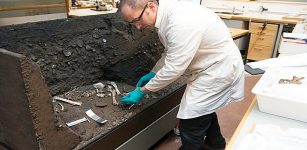 8200-Year-Old ‘Viste Individual’ – DNA Analysis May Shed Light On Early Migration To Norway
Archaeology | Dec 6, 2015
8200-Year-Old ‘Viste Individual’ – DNA Analysis May Shed Light On Early Migration To Norway
Archaeology | Dec 6, 2015 -
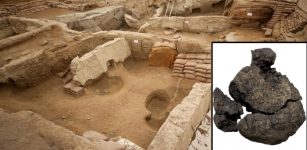 World’s Oldest Bread Found In Neolithic Oven In Çatalhöyük, Turkey
Archaeology | Mar 12, 2024
World’s Oldest Bread Found In Neolithic Oven In Çatalhöyük, Turkey
Archaeology | Mar 12, 2024 -
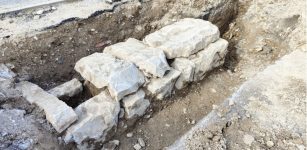 Mysterious Ancient Stone Structure Discovered In Torreano, Italy
Archaeology | Mar 29, 2023
Mysterious Ancient Stone Structure Discovered In Torreano, Italy
Archaeology | Mar 29, 2023 -
 Well-Preserved Neolithic Settlement Discovered Near Kutná Hora, Czech Republic
Archaeology | Aug 2, 2024
Well-Preserved Neolithic Settlement Discovered Near Kutná Hora, Czech Republic
Archaeology | Aug 2, 2024 -
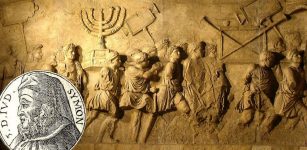 Artifacts Shed Light On 2,100-Year-Old Jewish Town In Judea Dated Back To Hasmonean-Era
Archaeology | Dec 16, 2017
Artifacts Shed Light On 2,100-Year-Old Jewish Town In Judea Dated Back To Hasmonean-Era
Archaeology | Dec 16, 2017 -
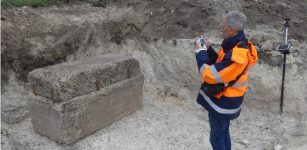 Intact 1,800-Year-Old Roman Sarcophagus With Unexpected Treasures Found In France
Archaeology | Sep 26, 2023
Intact 1,800-Year-Old Roman Sarcophagus With Unexpected Treasures Found In France
Archaeology | Sep 26, 2023 -
 Largest Ancient Embalming Cachette Ever Found Unearthed At Abusir, Egypt
Archaeology | Feb 20, 2022
Largest Ancient Embalming Cachette Ever Found Unearthed At Abusir, Egypt
Archaeology | Feb 20, 2022 -
 Unique Ancient Three-Headed Eagle Pendant Discovered In Finland: A Symbol Of Three Different Human Souls
Ancient Symbols | May 6, 2016
Unique Ancient Three-Headed Eagle Pendant Discovered In Finland: A Symbol Of Three Different Human Souls
Ancient Symbols | May 6, 2016 -
 Great Flood Myth Told By Klallam People Of Washington’s Olympic Peninsula – Confirmed
Archaeology | May 17, 2019
Great Flood Myth Told By Klallam People Of Washington’s Olympic Peninsula – Confirmed
Archaeology | May 17, 2019 -
 Rare Unexpected Discovery Of Elizabethan-Era Ship At Quarry 300 Meters From The Coast
Archaeology | Jan 2, 2023
Rare Unexpected Discovery Of Elizabethan-Era Ship At Quarry 300 Meters From The Coast
Archaeology | Jan 2, 2023 -
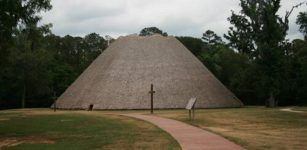 Did Democracy Have A Separate Origin In The Americas?
Archaeology | Jun 15, 2022
Did Democracy Have A Separate Origin In The Americas?
Archaeology | Jun 15, 2022 -
 A 1,500-Year-Old Basilica Re-Emerged Due To Withdrawal Of Waters From Lake Iznik
Archaeology | Sep 12, 2020
A 1,500-Year-Old Basilica Re-Emerged Due To Withdrawal Of Waters From Lake Iznik
Archaeology | Sep 12, 2020 -
 Excavations In Ancient City Of Cremna – One Of The Five Colonial Cities In Pisidia
Archaeology | Sep 26, 2023
Excavations In Ancient City Of Cremna – One Of The Five Colonial Cities In Pisidia
Archaeology | Sep 26, 2023 -
 Did The Inca Use The Quipu To Collect Taxes?
Archaeology | Jun 24, 2019
Did The Inca Use The Quipu To Collect Taxes?
Archaeology | Jun 24, 2019 -
 Impressive Study Highlights Female-Led Migration Into Bronze Age Orkney And Wins Prestigious Award For 2023
Archaeology | Apr 4, 2023
Impressive Study Highlights Female-Led Migration Into Bronze Age Orkney And Wins Prestigious Award For 2023
Archaeology | Apr 4, 2023 -
 Mystery Of Ancient Vanishing Lakes In South Africa Solved?
Archaeology | May 19, 2023
Mystery Of Ancient Vanishing Lakes In South Africa Solved?
Archaeology | May 19, 2023 -
 Neanderthals Were Present In Italy Much Earlier Than Previously Thought
Archaeology | Nov 6, 2015
Neanderthals Were Present In Italy Much Earlier Than Previously Thought
Archaeology | Nov 6, 2015 -
 Magnificent Burial Chamber Of Idy, Ancient Egyptian Priestess Of Goddess Hathor Discovered In Asyut
Archaeology | Nov 15, 2024
Magnificent Burial Chamber Of Idy, Ancient Egyptian Priestess Of Goddess Hathor Discovered In Asyut
Archaeology | Nov 15, 2024 -
 Enchanted Ancient Egyptian Amulet Seal Discovered In Türkiye’s Amasra
Archaeology | Nov 15, 2022
Enchanted Ancient Egyptian Amulet Seal Discovered In Türkiye’s Amasra
Archaeology | Nov 15, 2022 -
 Knaresborough Hoard Reveals Its Secrets – Unusual Roman Discovery In The British Isles
Archaeology | Jan 12, 2024
Knaresborough Hoard Reveals Its Secrets – Unusual Roman Discovery In The British Isles
Archaeology | Jan 12, 2024



